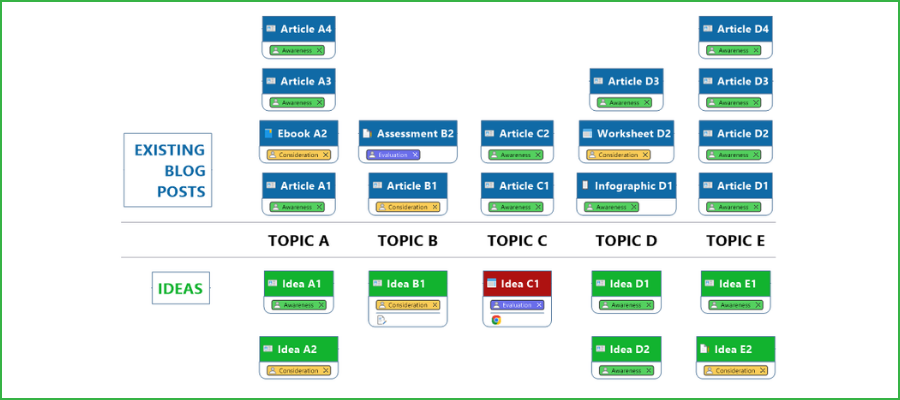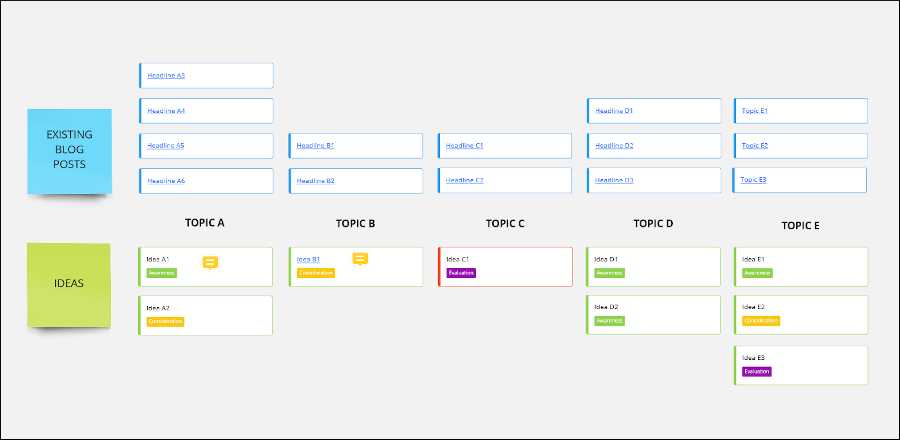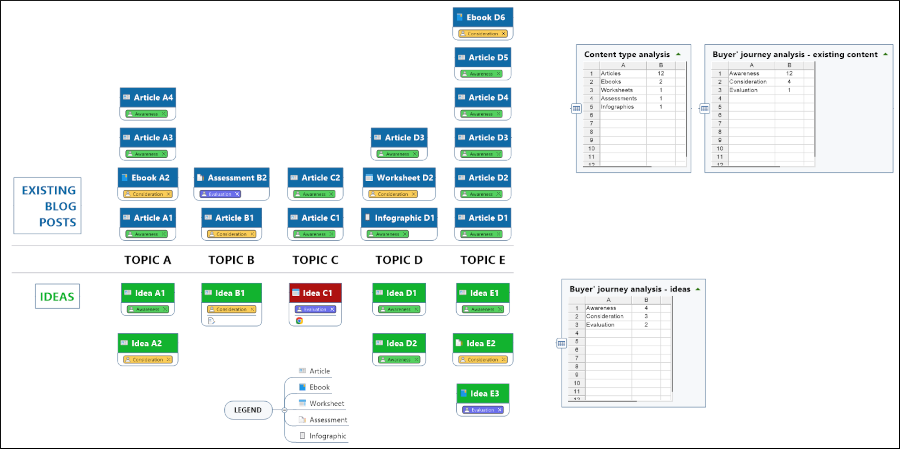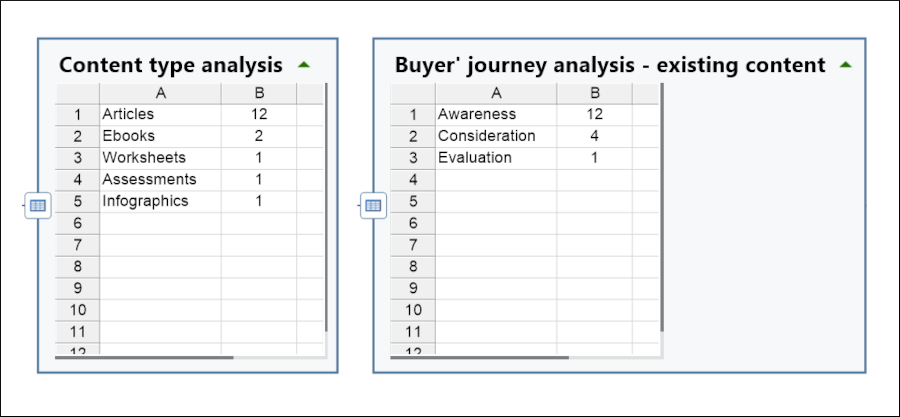
One of the challenges that marketers face today is making sure they’re taking a strategic approach to content creation. As many companies have unfortunately discovered, it’s quite easy to create a mountain of content – but see no increase in sales.
Approaching content strategically requires a different mindset – one that’s not focused upon producing it as an end unto itself, but on meeting key customer needs. More importantly, content needs to be designed to nurture prospects along a path to a sale – frequently called the buyer’s journey.
Several years ago, I used Miro to create a visual that simultaneously displays a company’s existing content (blog posts, ebooks, worksheets, infographics and more), organized by topic. Below that, it showed new ideas, with room for my client and I to add more. Here’s what that looked like:

It concisely showed the past (existing content) and the future (new ideas) in a simple, easy-to-understand format and was a big improvement over summarizing this information in a spreadsheet.
It elegantly and clearly showed gaps where not enough content was produced by topic and stage of the buyer’s journey. For each piece of content, it also displayed metadata, such as notes and links to supporting information.
A crash course on the buyer’s journey
Before we explore this visual model any further, I think it’s important for us to achieve a level set on the idea of the buyer’s journey. Simply put, it’s the path a prospective customer follows from the first time they realize they have a need or a problem they need to address until they buy a solution. The model I like to use has 3 steps:
- Awareness: This is the beginning of the buyer’s journey when prospects become aware that they have a challenge that needs to be solved.
- Consideration: This is the middle of the journey when the buyer defines their problem and starts exploring options to solve it.
- Evaluation: This is the last phase when the buyer is evaluating which provider’s solution to purchase.
By understanding the buyer’s journey, you can position your product or service to be the preferred solution as they consider you and competing suppliers.
Visual content audit v2.0
I created my original content gap analysis diagram in Miro, a popular collaboration and visual planning tool. If you work for a company with many remote workers, chances are you’ve used it or a tool like it. But I got to wondering – could I recreate it on a more widely-used platform – a tool like MindManager, perhaps?
The answer was a resounding yes! Not only was I able to duplicate the functionality of the original diagram, but I was able to use some of MindManager’s advanced features to take it to the next level.
Here’s an overall view of the visual content audit diagram (click on the image to view a larger version):

Here’s a closer look at this new and improved visual content audit diagram:
Expanding the buyer’s journey: The original diagram only contained buyer’s journey stages for the content ideas in the lower half of the diagram. I realized that it’s just as important to know how your existing content is distributed across the buyer’s journey. So I added it to this version. I was able to do so using MindManager’s “resources” tool within its task management panel. It even enabled me to assign colors to them.

Adding icons: Miro didn’t allow me to add icons to existing content or new idea elements. MindManager does, of course. So I took advantage of that and added a legend below the diagram to explain what each icon means.
Content type analysis: Although the visual format of this diagram gives you a high-level overview of the types of content you’ve already produced and the ideas you’re thinking about, I thought it needed a more concise summary. So I added a floating spreadsheet topic and populated it with the number of existing pieces of content of each type. Perfect!

Buyer’s journey analysis: Once I saw how easy this was to do, I decided to add another set of spreadsheet topics to summarize the number of pieces of content and ideas that are focused on each of the 3 stages. This, too, adds a lot of clarity and can help us see gaps and areas of weakness.
In the case of the example data in these tables, it’s easy to see that we’ve been producing too many articles and not enough of the other content types.
Also, the content we’ve been producing is heavily weighted toward the awareness end of the buyer’s journey. To effectively nurture more prospects to sales, we ought to produce more consideration and evaluation stage content.
Want this template?
It’s available exclusively to Mind Mapping Insiders, who can see the link below if they’re logged in to their account.
Become an Insider for a one-time lifetime investment of US$49.

Leave a Reply